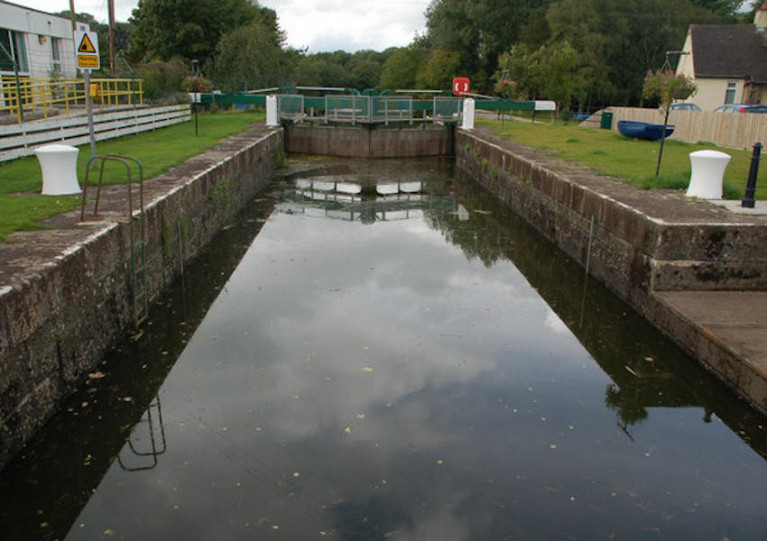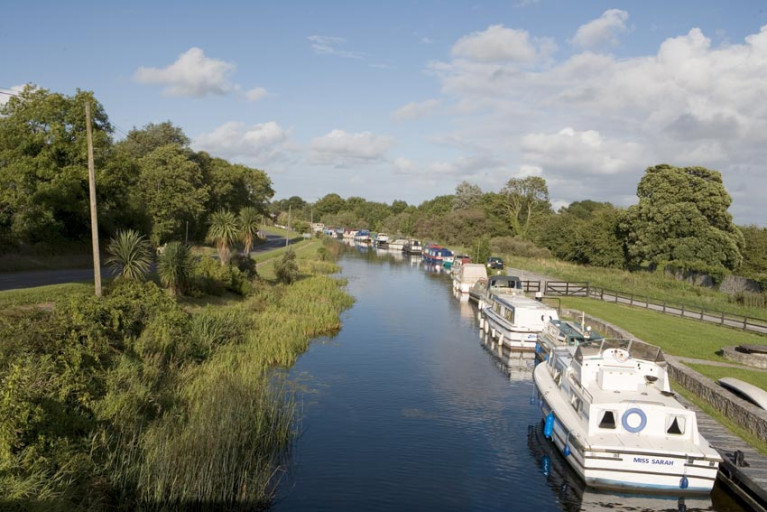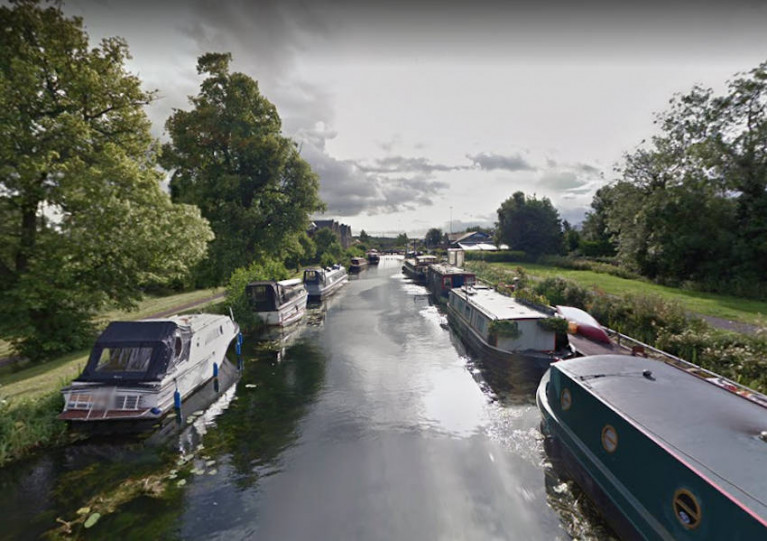Displaying items by tag: Waterways Ireland
‘Reprieve’ For Houseboat Owners On Grand Canal Under Orders To Move Or Lose Their Homes
It’s understood that an order to remove houseboats moored on the Grand Canal in Dublin this week hay have been rescinded.
Yesterday, TheJournal.ie reported that a number of people with floating homes on the canal in Dublin’s south inner city faced eviction this week under by-laws that restrict mooring to five days in any one place along the waterways.
Four current boatowners in the Portobello area said they had lobbied Waterways Ireland and politicians for changes to the law that could help towards easing the current housing crisis.
They pointed out that the waiting list for berths at Grand Canal Dock — where a number of houseboats have permanent moorings — have topped 200 applications, and suggest that there is room along the navigation in the city for much more than the two dozen houseboats moored at present.
Waterways Ireland had been set this week to remove the boats into storage for a month before selling them off, they claim.
But the Dublin branch of the Inland Waterways Association of Ireland (IWAI) says it understands that the new Government department responsible for the waterways has rescinded these lifting orders.
Speaking to RTÉ Radio 1’s Liveline this afternoon, Beau Donelly and Jacqui Thompson said that while nothing had been received in writing, the new Minister of State for Heritage, Malcolm Noonan, has taken the decision to suspend their eviction pending future discussions with related stakeholders.
This story was updated to include reference to this afternoon's Liveline segment.
Barrow Blueway Works Get Under Way Next Month
The start date for works on the proposed Barrow Blueway has been announced by Kildare County Council in conjunction with Laois County Council and Waterways Ireland.
When complete, the scheme will provide a multi-activity 46km off-road, flat and accessible public space and leisure route along the inland waterway – together with approved paddling trails for on water access – running from Lowtown in Kildare, through the towns of Rathangan, Monasterevin, Vicarstown, to Athy.
The proposed upgrade will improve access to the beautiful Barrow Way, both on and along the water, offering an enhanced experience to walkers, cyclists, wheelchairs users, paddlers and families.
Works are to commence on Wednesday 15 July at Milltown Bridge, some 3km north of Athy, with localised closures to facilitate the upgrade of the towpath. The duration of works this year will be around 16–18 weeks.
The works will be carried out in accordance with all environmental and planning conditions and under the oversight of an ecological clerk of works, to ensure any potential negative environmental impacts are avoided and ecological mitigation is implemented in accordance with legislation and best practice.
What’s being touted as a “top tourist attraction” is due to be complete early 2022 and “will not only offer a huge economic boost, positively influencing economic growth opportunities, it will also increase that sense of community, create exciting opportunities for both recreation and ways to experience many of the community's interesting places from new perspectives”, according to the project partners.
Kildare County Council will keep the public updated as works progress on the blueway scheme, which is funded by the Government of Ireland under Project Ireland 2040.
Details Of Reopening Of Locks On Lower Bann Navigation
Waterways Ireland advises masters and users of the Lower Bann Navigation of details regarding the reopening of the Locks from this Tuesday 23 June (pushed back from the original date of Thursday 18 June).
Locks will operate from 9am to 5pm daily, and lock passage charges will be waived until further notice.
Customers are encouraged to phone ahead to the lock in question to ensure lock gates are set and to avoid possible conflict with other boating traffic (all numbers +44):
- Cutts Lock 02870342999
- Carnroe Lock/Movangher Lock/Portna Lock 07876032891
- Toome Lock 07912305251
When preparing to move through locks, boats should be tied up at the approaching landing jetty and wait to be called forward by the lock keeper.
Customers should note that they should not throw mooring ropes up to the lock keepers and must secure their craft within the lock chamber using the chains or ladders provided on the chamber walls.
Waterway users should observe signage in place regarding social distancing, and take note that there are no toilet or shower facilities open until further notice.
Locks will reopen for longer and winter mooring will end on the Shannon Navigation from Monday 29 June, Waterways Ireland has announced.
Following this past week’s changes in the wake of phase two of Ireland’s coronavirus recovery roadmap, daily lock operating hours will be extended to 6pm on the Shannon.
As previously reported, electricity and water services have been reconnected, and normal pump-out facilities are available.
However, Waterways Ireland service blocks will remain closed for the time being across its network of inland waterways.
And the five-day mooring rule will be in force from Monday 29 June. Boaters to not need to travel to move their vessel before this date.
Waterway users, whether on the water on on towpaths, are reminded to continue observing social distancing protocols — at least two metres from other people — and to stay within 20km of home until travel restrictions are relaxed with the start of phase three.
Waterways Ireland has provided updated roadmaps for reopening in the Republic of Ireland and Northern Ireland respectively.
Waterways Ireland advises the public that the towpath on the south bank of the Grand Canal east of Tullamore between Cappincur and Ballycommon will be closed for three months for upgrades.
The path from Digby Bridge and Ballycommon Bridge will be closed to all users from this Monday 8 June to Monday 7 September to facilitate construction of the Grand Canal Greenway.
As previously reported on Afloat.ie, locks on the Grand and Royal canals as well as the Barrow Line and Navigation, the Shannon-Erne Waterway and Shannon Navigation are set to reopen (subject to maintenance) from this Monday.
This coincides with the beginning of Phase 2 of the country’s relaxing of coronavirus restrictions.
Sewer Line Repairs Completed On Grand Canal In Dublin
Repair works have now been completed on the broken sewer line between Locks 1 and 2 on the Grand Canal in Dublin.
Navigation between the locks was closed after the incident last summer which saw the partial collapse of a trunk sewer at Suir Road, west of St James’ Hospital in the city.
Works had been expected to finish in spring but Waterways Ireland announced their delay in early March, citing “a number of factors … outside of Waterways Ireland control”.
Passage in and out of Dublin on the Grand and Royal Canals remains closed until coronavirus restrictions are lifted. It’s expected an announcement on this will be made soon.
Waterways Ireland advises masters and owners of vessels that drilling and site investigation works will take place on the Shannon Navigation in the vicinity of Athlone Marina from this Wednesday 27 to Monday 31 May.
The drilling will take place from a barge. A safety boat will be in attendance at all times. Master of Vessels are requested to proceed with additional caution when in the vicinity of the works.
The advisory comes as water levels across the entire Shannon Navigation are currently classed as at or below ‘ordinary summer levels’ which requires extra caution, as previously reported on Afloat.ie.
Following more easing of Covid-19 restrictions announced by the Northern Ireland Executive, plans are being made by Waterways Ireland to reopen its navigations north of the border — the Erne System, Lower Bann and on the Shannon-Erne Waterway — to boating from next Friday 29 May.
The cross-border body for Ireland’s inland waterways says it is working to roll out health and safety procedures and protocols to ensure the safe return of both staff and boaters to these navigations.
Private boaters undertaking short trips on the water, as permitted under the new restrictions, are reminded to proceed with caution as navigations and their facilities have not been fully maintained since lockdown began in late March.
“It will take time to reopen the above navigations,” Waterways Ireland said in a statement. “We expect they will reopen on May 29th.
“Waterways Ireland’s locks and service blocks will remain closed in line with the five-step roadmap to recovery [in Northern Ireland]. We recognise the situation is constantly changing.”
It added that updates prior to reopening will be made via marine notices, on the Waterways Ireland website and via social media channels.
The Inland Waterways Association of Ireland (IWAI) yesterday welcomed to the return of boating to Lough Erne with a list of recommendations to keep everyone safe on the water.
Waterways Ireland advises boaters on the Royal Canal that there will be restrictions to navigation in the Castleknock area west of Lock 12 from next Monday 18 May until Friday 29 May.
This is for previously notified site investigation works on the waterway that were delayed due to Covid-19 restrictions.
A pontoon is being used as part of works west of Lock 12 towards Coolmine, and while it is in place other craft will be unable to pass.
Waterways Ireland advises all users of the Barrow Navigation that the area between the 28th Lock in Athy and Bestfield Lock near Carlow is currently closed for weir repair works.
No timetable was given for the completion of these works, but the cross-border body for Ireland's inland waterways apologises for any inconvenience caused.






































































